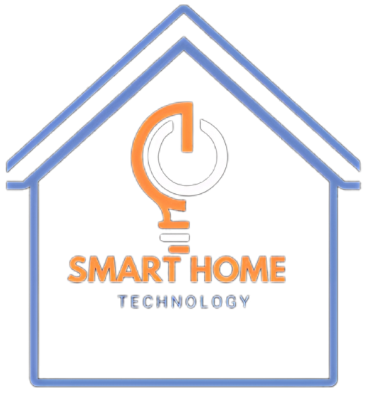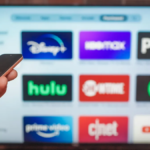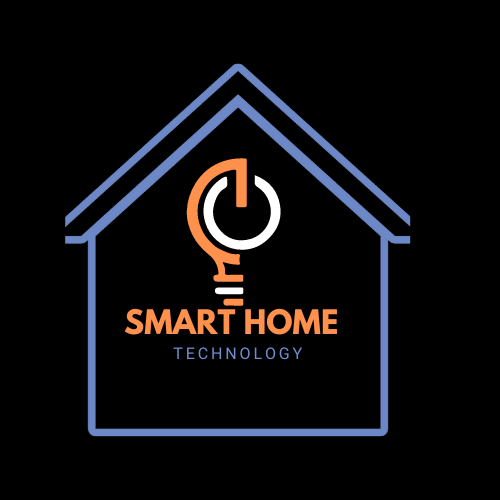Streaming devices are your ticket to a world of endless entertainment at the click of a button. They allow you to access a vast library of movies, TV shows, music, and more without needing physical media. Streaming devices work by connecting to your TV or another display and allowing you to access content from the internet.

photo credit: PC Word
Introduction
Streaming devices have revolutionized how we consume entertainment, offering convenient access to vast content at our fingertips. These devices have become a staple in many households, from popular streaming services to live TV and on-demand programming. In this article, we will explore how streaming devices work, the different types available, how they connect to the internet, considerations for streaming quality, user interface and navigation features, security and privacy concerns, and future trends shaping the landscape of streaming technology.
Understanding the workings of these devices is essential for anyone looking to enhance their entertainment experience in the digital age.
How does a Streaming device work?
Streaming devices work by connecting to your TV or another display and allowing you to access content from the internet. Here’s a simplified breakdown of how they work:
- Connecting to the Internet: Streaming devices need an internet connection through Wi-Fi or an Ethernet cable. This connection allows them to access online content from streaming platforms like Netflix, Hulu, or YouTube.
- Connecting to the TV: The device connects to your TV via HDMI (or older devices may use other ports like RCA). Once connected, it sends the video and audio signals from the internet directly to your TV.
- User Interface: When you power the device, it displays an interface on the screen. This interface shows available streaming services, apps, and content to browse and select. Depending on the device, you can control this interface using a remote control, voice commands, or even a mobile app.
- Streaming Content: Once you choose content, the device streams it from the internet in real time. The device communicates with the streaming service’s servers to fetch the media and play it on your TV. This means no downloading is needed; you can watch content instantly.
- High-Quality Output: Depending on the device and content, streaming devices support various video qualities, including HD, 4K, or even HDR. They adjust the quality based on your internet speed to provide a smooth viewing experience without buffering.
- Smart Features: Many streaming devices have additional smart features, such as voice control (via Alexa, Google Assistant, etc.), screen mirroring (to share content from your phone or tablet to the TV), and compatibility with other smart home devices.
In short, streaming devices act as intermediaries between your TV and the internet, allowing you to access and enjoy a wide range of content from multiple services without traditional cable TV.
Types of Streaming Devices

Photo credit: Tech slang
Here’s the categorized list of streaming devices with examples:
Categories of Streaming Devices
1. Streaming Sticks
– Examples: Roku Streaming Stick, Amazon Fire TV Stick, and Google Chromecast.
Description: These compact, portable devices plug into the HDMI port of your TV. They are great for those who want simple, space-saving options.
2. Set-Top Boxes
– Examples: Apple TV, Roku Ultra, Nvidia Shield TV.
– Description: Larger and more powerful than streaming sticks, these devices often come with additional features like more storage and better performance for high-definition streaming.
3. Gaming Consoles
– Examples: PlayStation, Xbox, Nintendo Switch.
– Description: Primarily designed for gaming, these consoles also double as streaming devices with built-in apps for Netflix, YouTube, and more.
4. Smart TVs with Built-In Streaming
– Examples: Samsung Smart TVs, LG WebOS TVs, Sony Bravia.
– Description: TVs with integrated streaming capabilities eliminate the need for an external device.
5. Blu-ray Players with Streaming
– Examples: Sony Blu-ray Player, LG Smart Blu-ray Player.
– Description: Traditional Blu-ray players that also support streaming apps for added functionality.
6. Streaming Devices with Advanced Features
– Examples: Nvidia Shield TV Pro, Fire TV Cube.
Description: These premium devices offer advanced features such as voice control, smart home integration, and high-end graphics processing for gamers and cinephiles.
7. Portable Devices with Casting Options
– Examples: Google Chromecast and Amazon Fire TV Stick Lite.
– Description: Devices designed for easy travel allow users to cast content from smartphones or tablets directly to a TV.
| Category | Examples | Description |
| Streaming Sticks | Roku Streaming Stick, Amazon Fire TV Stick, Google Chromecast | Compact and easy-to-use devices that plug into the HDMI port of your TV. |
| Set-Top Boxes | Apple TV, Roku Ultra, NVIDIA Shield TV | Larger devices with advanced features and more processing power. |
| Portable Devices | Google Chromecast with Google TV, Roku Express | Small and portable, combining convenience with versatility. |
| Smart TVs | Samsung Smart TV, LG WebOS TV, Sony Android TV | TVs with built-in streaming capabilities, eliminating the need for external devices. |
Comparison of Popular Streaming Devices
The battle of the streaming devices is fierce, with each contender boasting its unique features and perks. Here’s a table comparing some of the most popular streaming devices across various categories:
| Feature | Roku Ultra | Amazon Fire TV Stick 4K | Apple TV 4K | Google Chromecast with Google TV | Nvidia Shield TV Pro | Fire TV Cube |
| Price | $99.99 | $49.99 | $129.99 | $49.99 | $199.99 | $139.99 |
| Resolution Support | Up to 4K UHD | Up to 4K UHD | Up to 4K UHD | Up to 4K UHD | Up to 4K UHD | Up to 4K UHD |
| HDR Support | Yes (HDR10, Dolby Vision) | Yes (HDR10, Dolby Vision) | Yes (HDR10, Dolby Vision) | Yes (HDR10, Dolby Vision) | Yes (HDR10, Dolby Vision) | Yes (HDR10, Dolby Vision) |
| Voice Control | Yes (Roku Voice Remote) | Yes (Alexa) | Yes (Siri) | Yes (Google Assistant) | Yes (Google Assistant, Alexa) | Yes (Alexa) |
| Smart Home Integration | Limited | Yes (Alexa) | Yes (Apple HomeKit) | Yes (Google Assistant) | Yes (Google Assistant, Alexa) | Yes (Alexa) |
| Gaming Capability | Limited | Limited | Limited | Limited | Advanced | Limited |
| Storage Options | Internal Only | Internal Only | Internal Only | Internal Only | Expandable via USB | Internal Only |
| Ease of Setup | Very Easy | Very Easy | Easy | Very Easy | Moderate | Moderate |
| App Ecosystem | Extensive | Extensive | Apple Ecosystem + Others | Extensive | Extensive | Extensive |
| Portability | Low | High | Low | High | Low | Low |
| Unique Features | Lost remote finder, private listening via app | Affordable and compact, Alexa integration | Seamless Apple ecosystem integration | Cast content from devices | AI upscaling is best for gamers | Hands-free Alexa integration |
This table provides a quick comparison of some of the key features of these streaming devices to help you decide which one suits your needs.
How Streaming Devices Connect to the Internet
Streaming devices connect to the internet through one of two primary methods:
- Wi-Fi (Wireless Connection):
- Most streaming devices connect to the internet via Wi-Fi. This method is convenient and doesn’t require any physical cables.
- When you set up your device, it will scan for available Wi-Fi networks. You simply select your home network and enter the Wi-Fi password.
- Once connected, the device can stream content from the internet, provided your Wi-Fi connection is stable and fast enough for streaming.
- Ethernet (Wired Connection):
- Some streaming devices also offer the option to connect to the internet via an Ethernet cable, which plugs into the device and your router or modem.
- A wired connection generally provides a more stable and faster internet connection than Wi-Fi, reducing the chances of buffering or interruptions during streaming.
- This is especially useful if you have a large home or areas with weak Wi-Fi signals.
After connecting to the internet, the streaming device communicates with online servers to fetch content like movies, TV shows, or music and then delivers it to your TV or screen.
Understanding Streaming Services
Streaming devices are like empty canvases waiting to be filled with the vibrant colors of your favorite streaming services. Whether you’re into blockbuster movies, binge-worthy TV shows, or toe-tapping tunes, there’s a streaming service.
Factors Affecting Streaming Quality
Have you ever been in the middle of a gripping show only for it to start buffering like a robot having a meltdown? Streaming quality can be affected by internet speed, server capacity, and even the weather (okay, maybe not the weather, but that would be a wild excuse).
Bandwidth Requirements for HD and 4K Streaming
HD and 4K streaming require more bandwidth than your grandma trying to understand TikTok. You need around 5 Mbps for HD, while 4K will gulp down about 25 Mbps. So, if your connection is slower than a snail on vacation, stick to SD to avoid the dreaded buffering wheel of doom.
Data Privacy Risks
Ever feel like someone’s watching you through your smart TV? Well, they might be. Data privacy risks with streaming devices can range from targeted ads that know too much about your snack choices to potential hacking that could make your binge-watching history public. Yikes.
Securing Your Streaming Device
To secure your streaming device better than Fort Knox, guard the gold, update your software regularly, use strong passwords (hint: “password123” won’t cut it), and avoid clicking on sketchy links faster than you’d skip a boring documentary.
FAQ’s
How do you use a streaming device?
To use a streaming device, connect it to your TV via an HDMI port, power it on, and connect it to your Wi-Fi network. Download the apps for the streaming services you want, such as Netflix or YouTube, login, and start browsing and watching your favorite content using the device’s remote or a connected mobile app.
How does TV streaming work?
TV streaming delivers video and audio content over the internet instead of traditional cable or satellite signals. Content is sent in small data packets and played in real-time on your device, eliminating the need for downloading. A streaming app on your TV or device acts as a gateway to access this content.
How do I get streaming on my TV?
To stream on your TV, you can use a smart TV with built-in apps or connect a streaming device, such as a Roku, Amazon Fire Stick, or Chromecast. Ensure your TV is connected to the internet, download the apps for your desired streaming services, and log in to start watching.
How does streaming work on a non-smart TV?
Streaming on a non-smart TV requires a streaming device like a Fire Stick, Roku, or Apple TV. Connect the device to your TV’s HDMI port, connect it to your Wi-Fi network, and download the apps for the streaming services you want. The device upgrades your TV to provide innovative features.
Do you need the internet to stream TV?
Yes, streaming TV requires an internet connection to access content from streaming platforms. A stable Wi-Fi or wired connection ensures seamless streaming without interruptions.
Can I stream on a regular TV?
You can stream on a regular TV using a streaming device such as Roku, Fire Stick, Chromecast, or Apple TV. These devices connect to your TV’s HDMI port and provide access to streaming services and apps.
What are the disadvantages of streaming TV?
The disadvantages of streaming TV include:
- Dependence on a reliable internet connection.
- Potential buffering or lag during playback.
- The cost of multiple subscription services adds up over time.
- Limited access to local channels or live broadcasts without additional apps or services.
Do I need a smart TV for streaming?
No, you don’t need a smart TV for streaming. A streaming device can provide the same functionality by allowing you to access apps and services on a regular TV.
Is streaming TV free?
Streaming TV can be free or paid, depending on the platform. Services like YouTube, Tubi, or Pluto TV offer free content supported by ads, while platforms like Netflix, Hulu, and Disney+ require a subscription to access their libraries.
Conclusion
In conclusion, streaming devices have transformed media consumption, offering unparalleled convenience and flexibility. By understanding the underlying mechanisms of these devices, users can make informed decisions to optimize their streaming experience.
As technology evolves, staying informed about the latest trends and advancements in streaming technology will be crucial for staying ahead of the curve. Embracing the world of streaming devices opens up a world of entertainment possibilities, making it easier to enjoy our favorite movies, shows, and music with just a few clicks of a button.
Share Your Opinion
We’d love to hear from you! Streaming devices and services have revolutionized the way we consume entertainment. Whether you’re a dedicated binge-watcher, a music lover, or someone who loves keeping up with the latest news, streaming has something for everyone.




Pingback: 16 CAPABILITIES OF A SMART TV - smarthomze.com